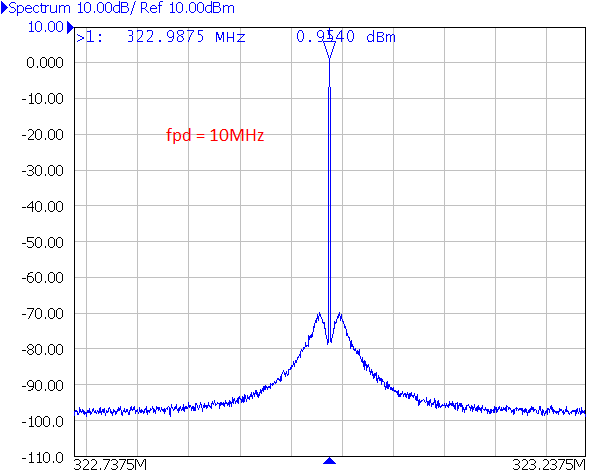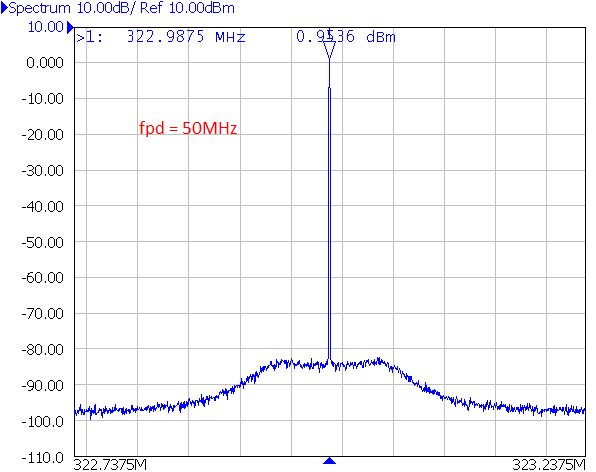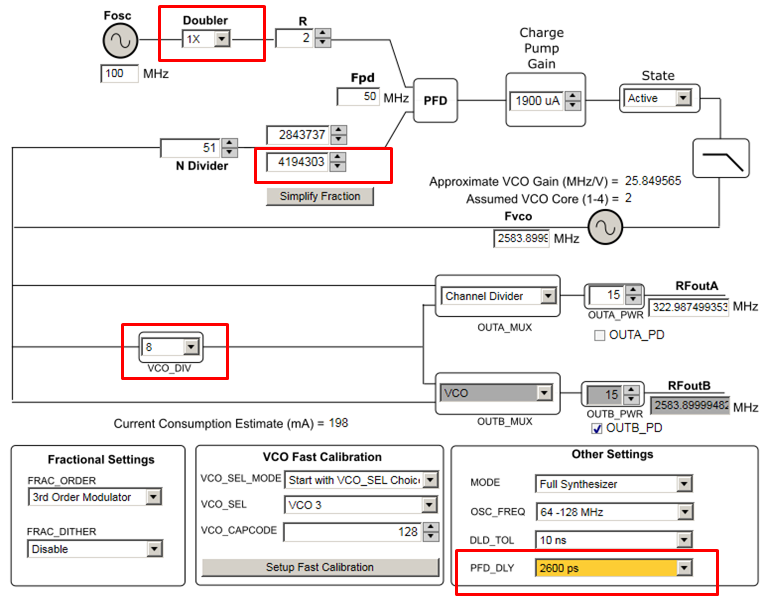Hi,
we try to improve the SNR of a LMX2581 using the differential outputs. The used carrier frequencies for this project are about 70 MHz and 323 MHz with a digital PWR setting from 5 to 30.
In the attachment you will find a picture of the measured SNR. I applied 30nH inductors -> Z about 50ohms (2*pi*f*L) with OUTx_PWR = 30 and Freq.=322.9875MHZ at this setting. Result: SNR=68.16 dB.
In a previous test I already applied a Balun after the pull-ups but this hadn´t any relevant effect on the SNR. With inductive matching the result was even a bit worse than without Balun.
I plan to raise the given value of the 51R pull up resistors to 100 ohms. I assume that the result is a forced impedance of 100 ohms. To match the impedance back to 50 ohm I want to use the balun with an according impedance ratio. For this example, with 100 ohms, it would be 2:1.
My questions regarding to that:
- Which impedance value would you recommend for such an application or which value is suitable for the LMX2581 at all?
- According to the LMX2581 datasheet page 21, the relative noise floor is better with inductors. Should I use inductors instead of resistors? If yes, have you an idea where my mistake is using the balun? Maybe its design type? Datasheet: https://ww2.minicircuits.com/pdfs/TC1-1-13MG2+.pdf
- Which method would you recommend to improve the SNR of the Synthesizer? Do you have any experience with operational amplifiers (i.e. instrumentation amplifier)?
- Can you tell me the S-parameters for the differential outputs? So I can calculate the matching impedance.
Thanks in advance
Adrian






